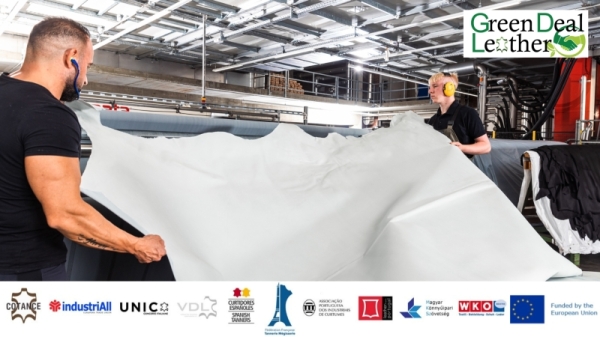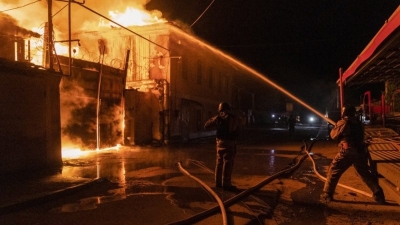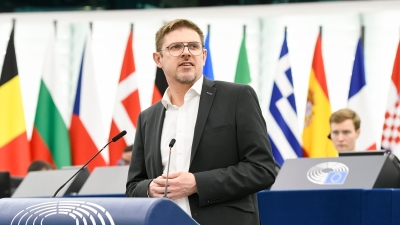Crafting Value: How Europe’s Leather Sector Shapes Environment and Society

The Leather Industry is one of the smallest sectors in the European economy. With approximately 1,600 leather companies (tanneries), it employs around 33,000 workers, which makes the industry almost invisible to EU citizens.
But what if we tell you, that despite its modest scale, these 1,600 tanneries generate nearly EUR 8 billion in turnover, making Europe the world’s largest luxury leather supplier and accounting for 30% of the global leather industry’s turnover?
Indeed, the process of transforming raw hides into finished leather merits being studied at Harvard University as a successful Business Case study. This is because, by upcycling 1% of the animal’s economic value (animal skins & hides that otherwise would be thrown into the trash bin), tanners create a sustainable material that drives both economic and social growth, integrating perfectly into the circular economy model.
However, despite being a business card of European craftsmanship to the world, tanneries are still portrayed as dirty, polluting, and backward, while leather is criticised as an unsustainable material—an image and false claims that have nothing to do with the European leather industry.
First of all, European tanneries are modern and responsible enterprises that prioritise the physical and psychological well-being of their workers.
Secondly, leather is one of the most sustainable materials known to humanity.
And with the Green Deal Leather Project COTANCE and IndustriAll-Europe, along with 7 social partners from Spain (ACEXPIEL), Portugal (APIC), France (FFTM), Hungary (MKZS), Italy (UNIC), Germany (VDL), and Austria (FVTBSL), proved that.
In every industry where humans interact with machines, incidents are inevitable; no one is completely safe from accidents. However, we have demonstrated that European tanneries are already safe and are becoming safer each year. Here are our 3 whys:
1. European tanneries invest in comprehensive training and state-of-the-art equipment for their employees. They focus on talent retention and development through reskilling and upskilling programs and maintain a high rate of permanent contracts (over 90%) to strengthen working relationships.
According to the study, the total number of accidents in the EU countries that took part in the survey (Italy, Spain, France, Germany, Portugal, Hungary, Austria) was 1,317 in 2019 & 1,102 in 2021, meaning a 16% reduction in declared accidents in the two years of analysis and an incidence of 3,2% in 2021.
Some 15% of accidents occurred commuting between home and the workplace, while over 90% of accidents registered during the reporting period were rated of “minor” severity.
This is a basis for doing business and the GDL report will guide you further on that.
2. European tanneries are safe as the abovementioned individual efforts are amplified by the collective actions of international leather stakeholders, who are consistently brought together for projects and initiatives aimed at enhancing the protection of leather workers worldwide.
Key achievements include:
- The free OiRA risk assessment tool, available since 2012, offers essential health and safety information for tanneries for free.
- Occupational Safety and Health Aspects of Leather Manufacturing course launch in April 2023. Developed in cooperation with UNIDO, COTANCE, SLF, and the International Union of Leather Technologists and Chemists Societies, the course provides up-to-date safety and health advice for leather manufacturing facilities, free of charge.
3. European tanneries are safe and good places to work also due to our industry’s vibrant social sectoral dialogue with trade unions. We are proud of this dialogue, which strengthens the industry with common objectives, joint declarations and useful projects, such as the current GDL initiative.
Explore our #SafetyFirst Campaign on COTANCE social media to experience what it’s like to work in European tanneries.
Another ambition of the Green Deal Leather project, our two-year initiative funded by the EU, was to conduct a first-of-its-kind study on the Carbon Footprint of European bovine leather. This study will be released on May 16, 2024, at the GDL Final Conference in Brussels, challenging numerous misconceptions about leather and its sustainability.
Let’s make it clear from the very beginning: leather is an upcycled byproduct of the meat industry. Tanners transform hides, which represent on average just 1% of the animal’s economic value into a sustainable fashion material generating wealth and jobs in Europe. Opting for leather helps upcycle a resource that would otherwise go to waste. Besides, thanks to its properties, leather is a natural material that can be repaired, reused, and repurposed, highlighting its crucial role in the circular economy and establishing it as a prime choice for sustainable practices.
Leather champions durability: It has been proven that alternatives such as “Faux” or “vegan leathers” cannot compete with the technical performance (durability) of genuine leather. This is supported by a recent study from FILK Freiberg Institute gGmbH.
Leather is naturally biodegradable. As a natural product, it will biodegrade in a typical landfill within 10 to 50 years, unlike plastic-based materials like “vegan leather,” which can take over 500 years to break down. Further insights can be found in the paper by Carcione F. and Defeo G.A. et al., which critically compares the bio-based content and sustainability balance of leather and its alternatives.
Returning to our GDL study, which contributes to this scientific debate, while the final results will be shared at the GDL Final Conference in Brussels, we are prepared to exclusively share some preliminary results with Euractiv:
- The carbon footprint of the leather varies based on specific characteristics of the produced leather (e.g., thickness, and performance requirements). Each piece is made to order based on customer requests.
- The ECO₂L tool enables tanneries to benchmark their performance and monitor CO₂ reduction progress.
- Replacing a chemical with one that has a lower carbon footprint does not necessarily improve the overall footprint.
- The environmental impact of leather is less dependent on the tanning process and more on related sectors, such as agriculture and chemicals.
Intrigued? Join us in Brussels/online and contribute to the discussion on leather’s environmental and social sustainability. Don’t miss out on this chance: register now to secure your spot – places are limited.
COTANCE, the Confederation of Tanners and Dressers of the European Community is the representative body of the European Leather Industry, gathering over 95% of European tanneries. European leather production, known for its rich heritage and high-quality craftsmanship, is a key player in the circular economy by transforming byproducts from milk, meat, and wool production. The sector includes 1,600 leather companies, employing directly around 33,000 workers, generating a turnover of nearly EUR 8 billion. Globally, European leather represents 30% of the world leather industry’s turnover.



